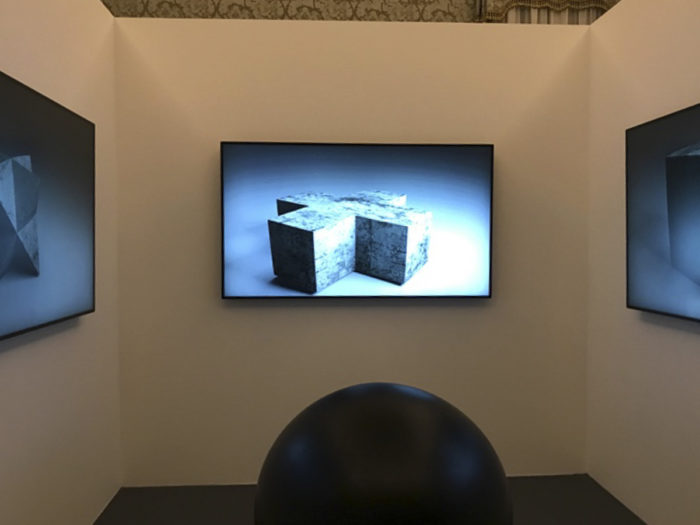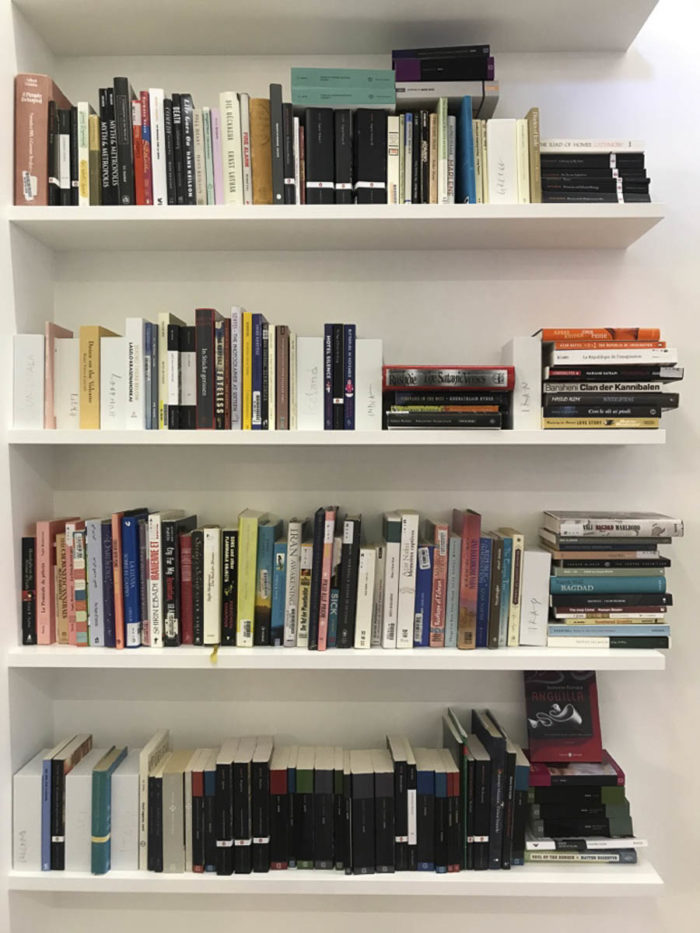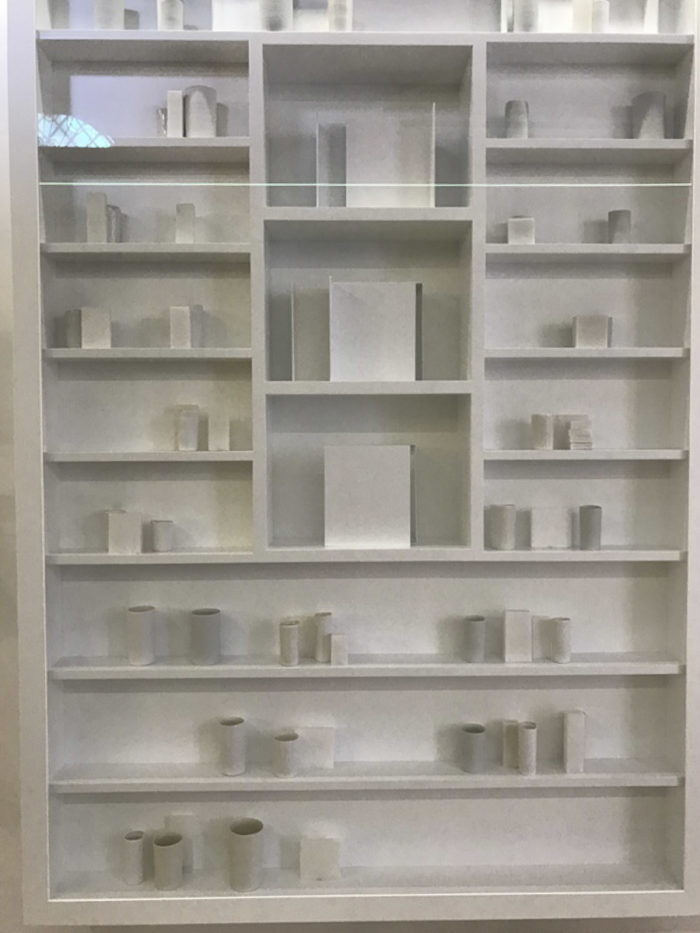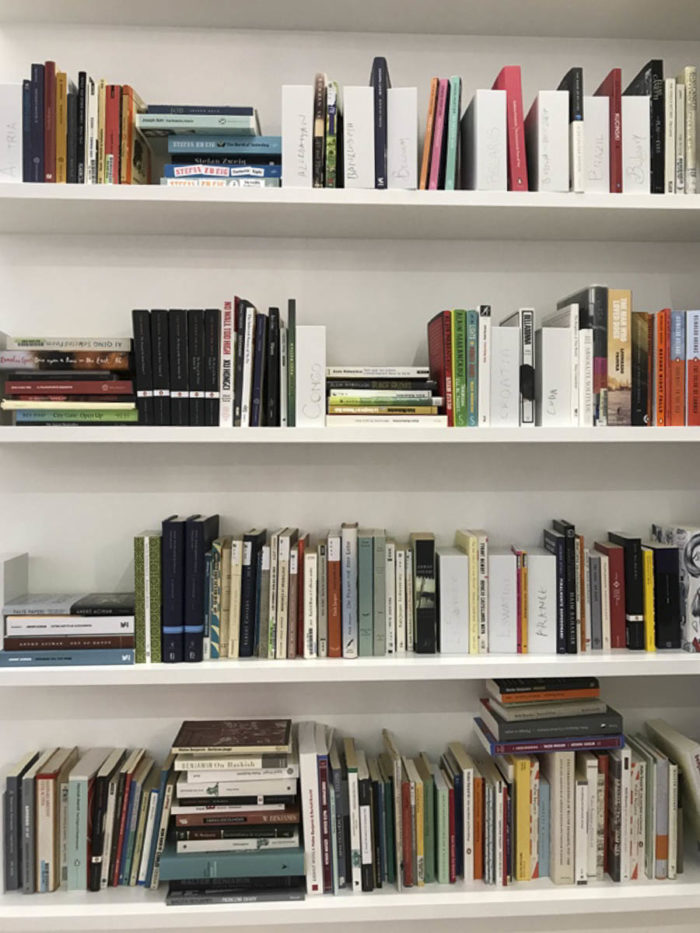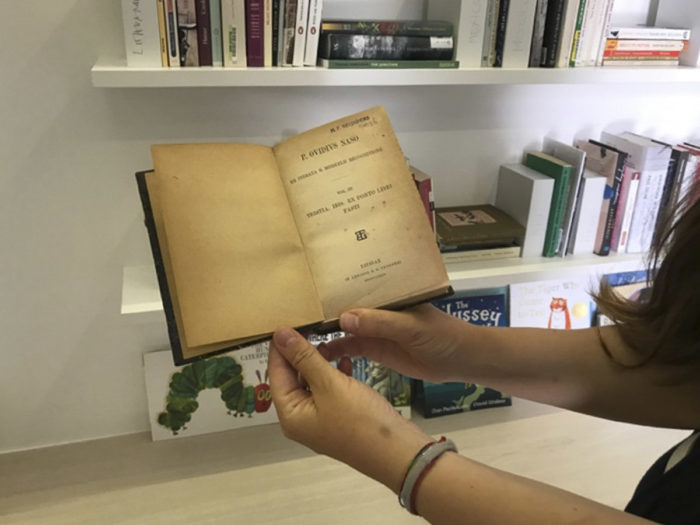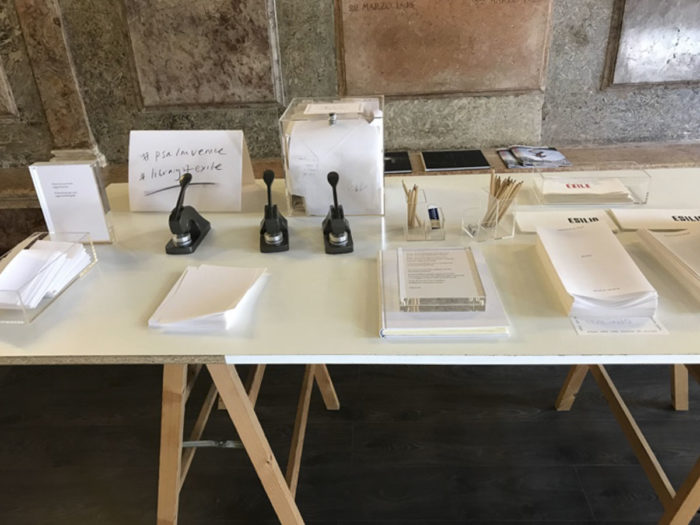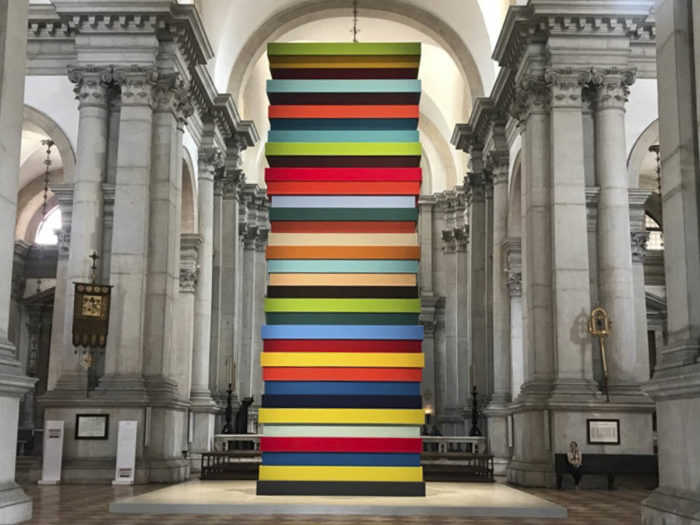ART AND POLITICS – LEARNING FROM VENICE EXHIBITIONS
Visiting some exhibitions parallel to the Venice Biennale can be an interesting experience. Especially if one is interested in the relations between art and politics or more concrete if one looks for answers to the question how art can contribute to peaceful development. For some there is a simple answer to these issues. They see no specific function of art concerning politics in general and peace specifically. Others demand from art always a political contribution.
One of them was Pablo Picasso, who said in an interview towards the Ende of World War II: “What do you think an artist is? An imbecile who only has eyes if he’s a painter, ears if he’s a musician, or a lyre in every chamber of his heart if he is a poet – or even, if he’s a boxer, only some muscles? Quite the contrary, he is at the same time a political being constantly alert to the horrifying, passionate or pleasing events in the world, shaping himself completely in their image…. No, painting is not made to decorate apartments. It’s an offensive and defensive weapon against the enemy.“
For Paul Klee on the other side it was pure coincidence if the spiritual power of the artist was meeting the material power of the majority. The Belgian painter Luc Tuymans – who presently has a big exhibition at Palazzo Grassi – has a moderate position, when he declares: „Life is politics, basically, but you don’t just go to a gallery and put the words „art“ and „politics“ on the wall. Similarly, Marina Abramovic states „The function of the artist in a disturbed society is to give awareness of the universe, to ask questions, and to elevate the mind“. For me this is the best description what you can see at several exhibitions in Venice parallel to the Biennale.
Pragmatically I would say, art – and I concentrate on pictures, sculptures and videos – must foremost be good art. If artist think about art also(!) in political terms than I appreciate this attitude, as it creates an additional value added. A number of exhibitions in Venice produced this additional value in an exciting way. Interestingly they were using traditional – non „political“ – locations like churches, synagogues, museums and palaces to present their work. The confrontation of European cultural/religious environments with art which wanted to demonstrate the values of multicultural societies and thinking was as such exciting. As far as I could see, the artists did not want to overcome or substitute specific religions but open them up and make them ready for dialogue and respect for the „other”.
The artists in Venice did not want to deny European culture and heritage, but they wanted to go beyond and include other cultures and orientations by expressing respect for them – especially in view of the widespread disrespect of diversity today in many political circles. In one case an Iranian sculptor and video artist showed the transformation of the religious symbols like Cross, David Star and Kaba into the same ball or globe. Or the other way round. The artwork wanted to demonstrate, that the three religions, Christianity, Jewish belief and Islam have the same roots or should transform themselves into the same one world – overcoming religious divisions and wars.
The author and artist Edmond de Waal organized one part of his exhibition deliberately in a synagogue in the Jewish ghetto. He used materials like marble and gold which was not allowed to use when the synagogue was originally built. Edmund de Waal argued his choice as follows: „The Ghetto is a place of connections, a place of a plurality of languages and cultures; of German, Flemish, Persian, Ottoman, Spanish and Portuguese Jews alongside Italians. This was a place of constant translation, a testing ground for comprehension and nuance…. Everything is plural here, one history reaching out to another, a palimpsest of voices.“
But his political message became even clearer in the second part of the exhibition at Ateneo Veneto, a former Venetian meeting place for debate. Here de Waal shows many books of authors around the globe, who have been forced to go into exile. And he presented these books – which one could read in the exhibitions – as a protest against the enforced exile of many writers and all the destructions of libraries in the history of mankind. One book was special, it was the only book his great grandfather Viktor took with him when he had to flee from Vienna from the Nazis and had to leave his library behind.
This library of exiled literature will have several stopovers before it will be given to Mosul in Iraq, where one of the last libraries was burnt down. Especially coming from Vienna from where de Waal’s family was exiled the exhibition of de Waal’s ceramics and of the books was very moving for me. Also, because the reasoning of this artwork was the same as for the Viennese Holocaust Memorial by Rachel Whiteread: What starts with the burning of books ends with burning of people according to the words of Heinrich Heine „Dort wo man Bücher verbrennt, verbrennt man am Ende auch Menschen“.
I was personally involved in choosing the artist Rachel Whiteread to plan the Vienna memorial after her presentation to the Jury. And although the beginning I had some doubts about the used material – concrete – I was defending and implementing the project at Judenplatz in Vienna against some fierce opposition. And I am very happy about the result and the wide recognition of the monument today. De Waal’s artwork stands in close spiritual relation to the sculpture of Rachel Whiteread and should remind us how devastating and destructive the degradation of culture and literature in specific is for peace.

Another clear political message came from the work of Chiara Dynys with the title: „Sabra Beauty Everywhere“. She could show her work in the traditional art museum, Museo Correr at Marcus square. Together with religious art from former centuries the Triptychons the pictures of children from the Palestinian refugee camp Shaba and Shatila demonstrates the conflict between religious beliefs and worship on the one side and the negligent attitude towards the fate of refugees and victims of war and expulsion on the other side. To worship god and saints has often no consequences for our attitude towards those who would need our help and support.
It is not easy to present photographs of peace, so if one wants to plead for peace one has to present pictures of war and destruction. And one has also to show beauty besides misery to show the potential of a life after.
Another clear message for diversity and a multicolored world was expressed by the Swiss artist Sean Scully. He shows many works under the title „Human“. The central and site-specific work is a high and colorful monument in the church on the island of San Giorgio Maggiore. The church which was built by the famous architect Palladio and is the home of important art works is a temporary home for sculptures and painting by Scully. His mostly abstract forms stand in productive antagonism to the existing architecture, art and landscape. But they express a desire for spirituality and peace beyond a specific religious believe.
What will be the consequences of these exhibitions? Will they change the world? Well, one has to refer to the Brazilian writer Jorge Amado who once said: „We have to recognize that no work spoken against violence and tyranny is entirely vain and useless: Somebody who hears it just might overcome fear and start to rebel.“ And that may be true also for art as it is shown in Venice this summer. It will not always have rebellion as consequence, but at least violence and tyranny will not be accepted as self-evident. And people will realize that alternatives are possible – everywhere. And that means also in countries, where critical artists are always in danger of being censored and pushed into exile.
Many other exhibitions would deserve a mentioning and intensive description like the exhibition of Chinese artists – also on the island of St.Giorgio – and of Carneval of Antigua and Barbuda as expression of resistance. But this report should be an incentive to go and see these exhibitions oneself or think in general of the relationship between art and politics. As I said at the beginning of this short article, art should primarily be good art and by such it can enhance our personal spiritual wellbeing. But good art which is also helping us to overcome prejudices and religious – and other kinds – of narrow-mindedness can in addition improve our societies. And this is happening in Venice -right now. And of course, Venice is always inviting for a visit.

